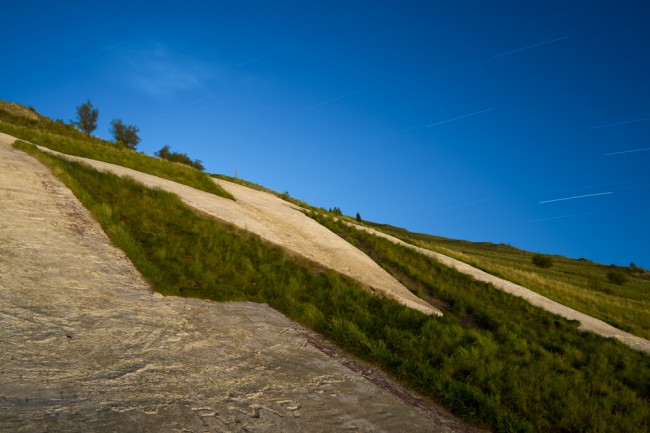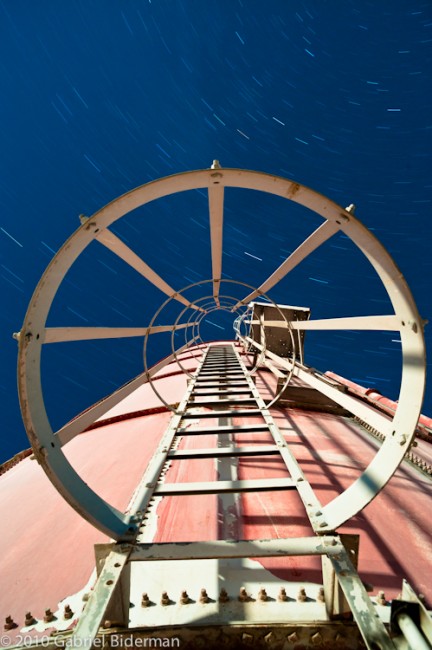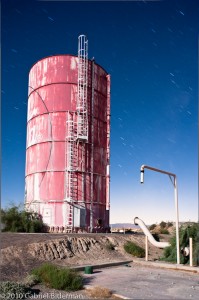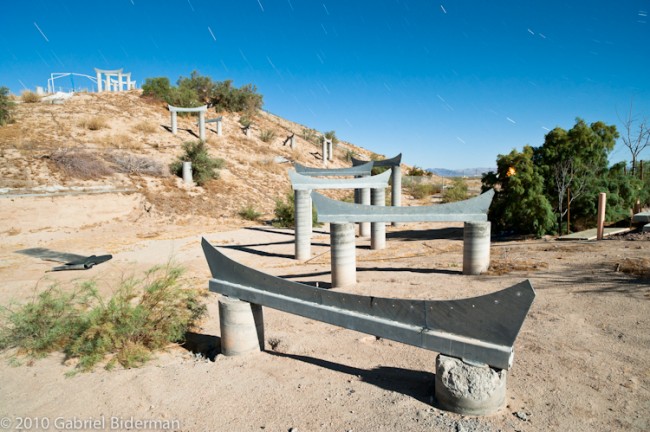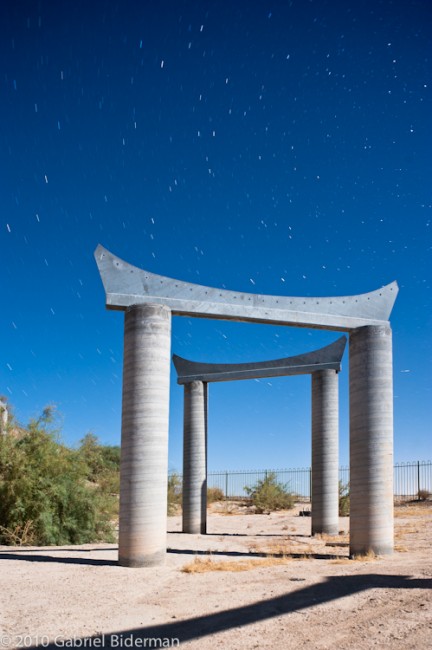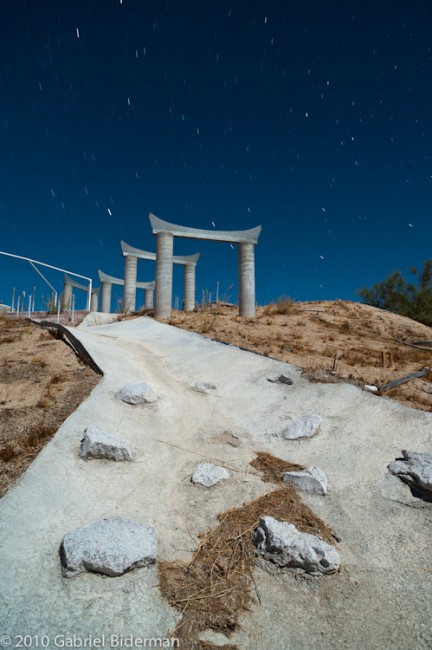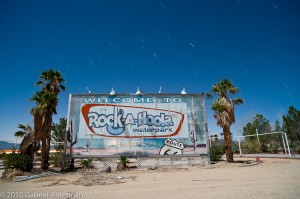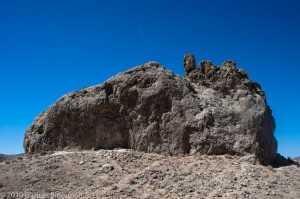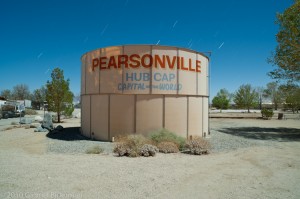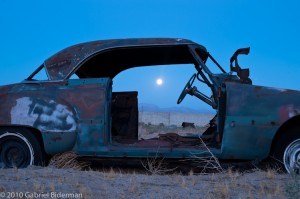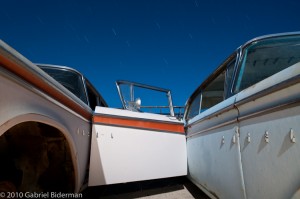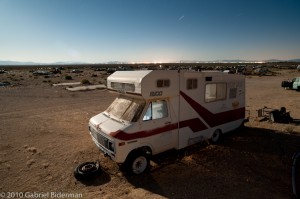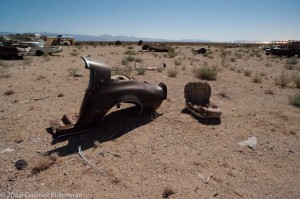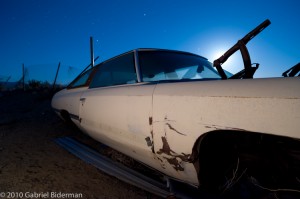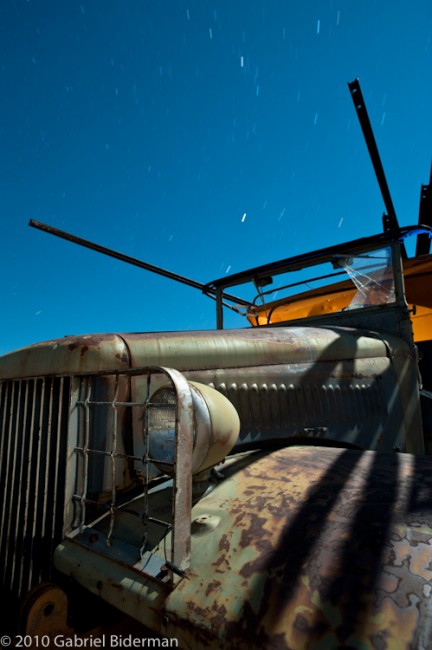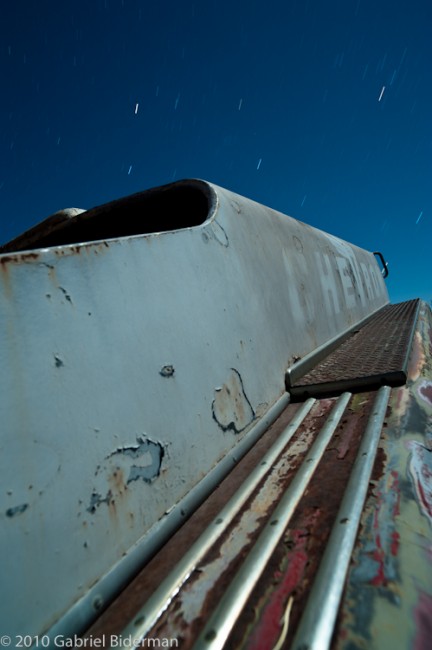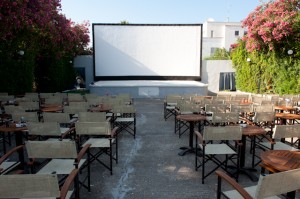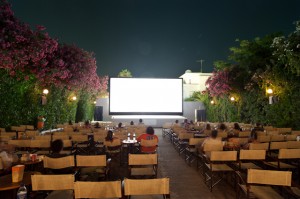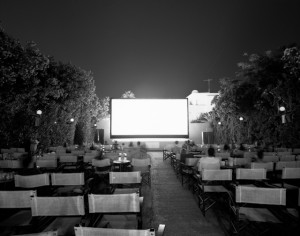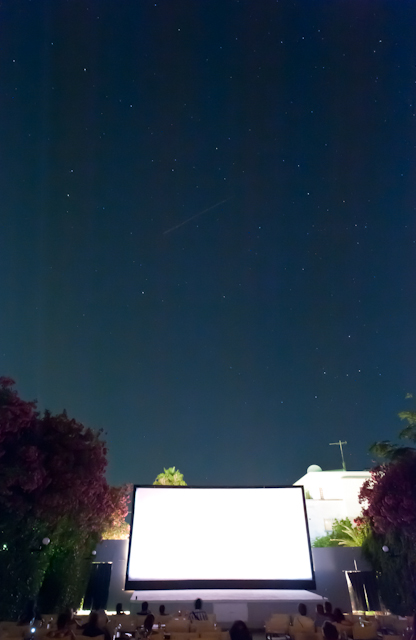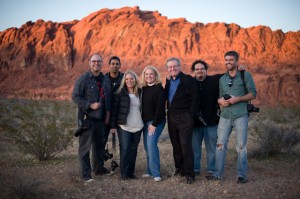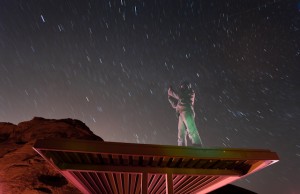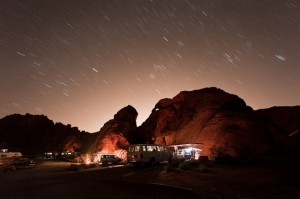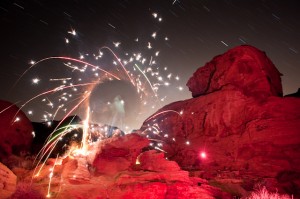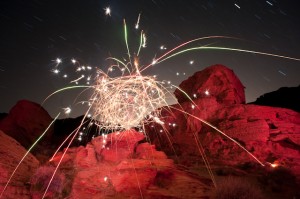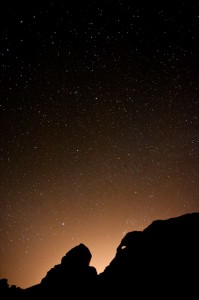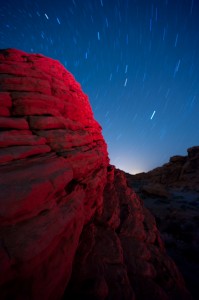I was in the desert.
I remember climbing up lots of stairs with the unrelenting sun pounding down on my burning skin. There was music blaring, but I could still hear the screaming. And when I finally got to the top, I understood why…you couldn’t see the bottom. And then someone pushed me into the half-pipe. The inch or so of water lessoned the blow and then propelled me down the tube. I joined the screaming until the very end as I shot into the pool.
That was my first waterpark experience and as you can see, I remember it fondly. I’ve never been a strong swimmer, but on a waterslide it is all the fun of watersports crammed into 20 seconds of an exhilarating ride. I remember watching the smaller kids shooting out the tube and skimming across the pool like skipping stones.
So when I heard of an abandoned waterpark halfway between Los Angeles and Las Vegas, I had to pay a visit. I want to thank Joe and Troy for suggesting a stop here. As I enjoyed my last sausage and mushroom frittata from Kristy’s Family Restaurant with Joe, we discussed the Rock-A-Hoola waterpark as our Night 5 locations spot. Both Joe and Troy have some amazing images from their night shoots at the waterpark and it was on our way north, an easy excursion.
We said our goodbyes to the rest of the Peasonville 12, and Barry, Heidger, Tor, and I made our way towards Barstow, California.
Stocked with sandwiches, water, and the everyhandy trail or munchy mix, we made our way towards Rock-A-Hoola. It was strategically placed right off the highway for the tourists of days bygone to take a quick dip.
Water has always flowed in this desert region, but unfortunately it has been flowing underground. In the early 1950s, a local businessman by the name of Bob Byers, purchased this land and turned it into a park/campground for his extended family. In 1962 Lake Dolores became one of the first official waterparks open to the public. Variations of the waterslides had been popular since the turn of the century but this was one of the first water parks in the the USA. It featured super fast stainless steel slides, zip-lines to pools, and a man made lake that had motocross racing around it. This little oasis’ height of popularity peaked from the early 70’s until the mid 80’s but then the water was turned off in the late 80’s. An investment group came in and replaced the stainless steel waterslides with red, white, and blue high density plastic slides. Their idea was to create a 1950’s themed waterpark adding new slides, rides, and taking back the title of the world’s longest Lazy River. Thus, in 1998, Rock-A-Hoola Waterpark was born, with 1950’s music playing from open to close. Maybe that was the writing on the wall. Or more likely it was the kid who severely injured himself on one of the slides during the off hours. The catch pool didn’t have enough water to break his fall and he became a $4.4 million paraplegic.
The investment group filed for bankruptcy two years later, but not before relaesing this awesome advertising campaign.
Two years and $400,000 later, another group attempted to breathe life into Rock-A-Hoola and renamed it Discovery Park. That lasted another two years, mostly open for the weekends before finally closing down for good. And there it sat, a wonderful little blip on the grid for millions of people to see on their way to Vegas.
We arrived on 5:30 pm on September 26th. A huge billboard exclaiming “Family Fun” greeted us in the desolate dirt parking lot. There were no fences and no signs deterring passage, we didn’t even have to go through the entrance turnstile! In fact I was shocked to find very little graffiti and vandalism given that it was a stone’s throw from a major highway.
As the sun started to sink…I made my way to the giant Coca Cola water tower standing solo at the top of the hill.
Most of you know that I am definitely drawn to infrastructures, and this was one of the finest examples of a water tower that I have seen. The red coloring of the tank was beaten and pealing off after many cycles of the sun and I just imagined this tank filled with coke instead of water shooting the soda down the slides!
We had about 1 hour and 15 minutes of complete darkness before the moon was to rise, which meant more stars in the sky and longer exposures at the beginning of the night. The first image of the water tank was taken in complete darkness and with an old Nikon 28mm AIS PC lens. A PC, or perspective control lens, allows you to correct for converging lines when pointing your camera up at buildings. Instead of tilting the camera at an angle up towards the subject, which gives it a wide base and skinny on the top look. A PC lens lets you keep the camera level and the lens actually shift up about 11-12 degrees to give a more normal perspective. The PC and Tilt Shift lenses are most commonly used by architectural photographers but there has been a big movement to also use these lens and actually distort the perspective as well.
During the second image, a bit of the Milky Way can be seen at the top of the tower, like the fizz coming off a bubbly coke. I like this shot, looking up the ladder to the sky, but I wanted to amp that feeling even more. So I got into one of the most difficult low angle shooting positions I have attempted and tried to line up the wide Zeiss 21mm lens for the third image, titled Starway. It was a banger. I took two 15 minute exposures of this and was pleasantly surprised to have a star trail fit exactly through the top of the hole. I spent close to 3 hours working the Coca Cola tower, shooting different angles and interpretations of the same subject matter. Barry joined me up at the tower halfway through my shoot and we both began working the angles. And as we waited the 15-30 minutes per exposure we lay down on the cement and stared at the stars. We were all alone at an abandoned waterpark in the middle of the desert. The stars were incredibly bright and we talked, laughed, and felt the earth rotate beneath us.
Draining the coke of all of its images, we made our way down to the slide area. We checked in with Tor and Heidger, who were popping gelled lights and long exposures in the entrance/storefront area. I was fascinated with the slides, or the support structures that supported the now missing slides. They reminded me of the Japanese Shinto Toriis, or Shrine Gates, and I became one with them for the next few hours. Barry ventured along the lazy river, now filled with dust and debris, as he made his way to the kiddie park.
I climbed to the top of the highest slide, I could see the streaks of the car lights zipping along the freeway. I couldn’t see Lake Dolores, but I saw plenty of tracks from recent off-roading, people were still using the land even though the man-made aspect had fallen into ruin.
By the time I finished up with the Shinto Shooting, it was approaching last call. I found Barry over in the kiddie pool and Tor and Heidger were still shooting the retro shops in the entranceway. Rock-A-Hoola was incredibly expansive and I commented that each of us really only explored 1-2 aspects of the park. Luckily they were all different points, so if you look at all of our images you should have a better perspective of the place.
We decided one last exposure before packing up, and I made my way over to the Rock-A-Hoola billboard in the parking lot. I set it up for a 6 minute shot with 6 minutes of noise reduction and then went and hung out with Barry by some other retro billboards he was shooting. It was during this time when I saw a couple cars pull into the lot. We were on the other side of the billboard, so they couldn’t see us but I could see them; and them were cops. Now my camera and tripod were in full view on the same side as the cops were, I wasn’t going to hide and risk losing my gear, and images.
They shined their bright flashlights on me as I slowly approached them. I kept a very positive, non aggressive attitude, and explained that we were just here taking pictures. I was quickly put into handcuffs as they told me I was trespassing, etc etc. Barry came around the corner and started calming reiterating that we were just photographers as he got patted down. It wasn’t until he mentioned that he was a San Francisco City employee and worked with probation officers that they started to listen. A quick check on both of our records came back clean and the cuffs came off. I was only worried for a moment that I would be sleeping on a cement floor. The female cop noted that it was a cool place to shoot but it was dangerous and definitely trespassing, no matter if we saw the sign or not. They asked us to pack our things and leave, so we rounded up the troops and just like little kids, sadly left the waterpark.
It is typical to meet security or police officers while doing night photography. I advise always carrying a small portfolio of your images with you and staying apologetic and non-aggressive, there usually won’t be a problem.
I love the images from this shoot as well as the experience, even including our run in with the authority! I’m glad I went and hope to take a dip in the kiddie pool next time I’m driving through!
